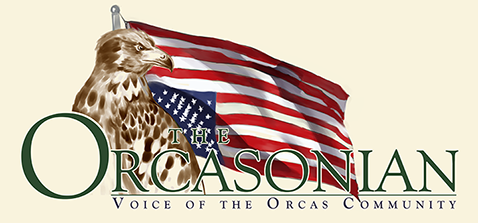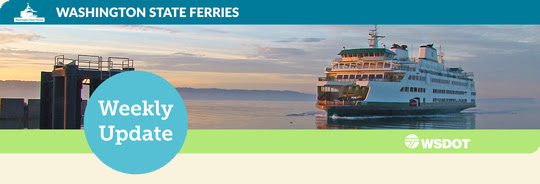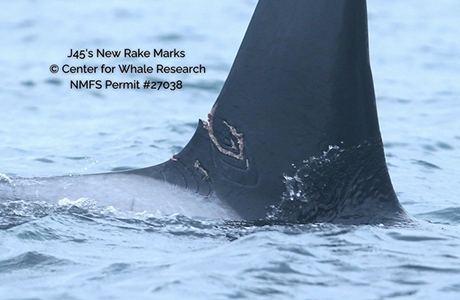||| FROM ISLANDS STEWARDS |||
What’s new, what’s missing, and why transportation could make or break island life.
Transportation in San Juan County isn’t just about roads or traffic — it’s about access. It’s about whether you can get to the doctor, make it to your job, or even continue to live here at all.
With the release of the 2025 Comprehensive Plan draft, the Transportation Element shows some promising changes. But it also overlooks the most vital tools that could actually support a diverse, sustainable future: public transportation and rideshare.
Let’s break down what’s new — and what still needs to be said out loud.
What’s New in the Draft
1. Multimodal Level of Service (MMLOS):
The County is finally moving past car-only thinking. This new standard includes walking, biking, and other non-vehicle travel modes. It’s a good shift — one that supports people who don’t drive or can’t afford a car.
2. A Countywide Active Transportation Network:
The draft introduces a mapped-out system of bike paths and walking routes connecting communities across the islands. That’s good news for both residents and tourists. If visitors can walk on the ferry and still get where they need to go, that frees up space for residents who rely on ferries for essential travel — medical appointments, supply runs, or family emergencies.
3. Updated Traffic Forecasts through 2045:
The plan now includes longer-term traffic modeling, with updated daily volumes and intersection performance. While growth isn’t booming, it’s steady enough that we’ll need more than just maintenance — we’ll need strategy.
4. Cleaned-Up Goals and Policies:
The revised language aligns better with state Growth Management Act requirements and supports more coordination between transportation planning and land use.
What’s Missing: Public Transit & Rideshare
Despite the updates, there is no substantial mention of public transportation or rideshare systems — and that’s a major oversight.
We need to say it plainly: transportation is a make-or-break issue for equity and livability in San Juan County. Without reliable, affordable options to get around, many residents are either stranded — or priced out.
Public and shared transportation options could:
- Help rural residents commute to jobs in town
- Reduce the pressure on ferry car capacity
- Allow people with disabilities, elders, and young people to stay connected
- Support those with sensory sensitivities who can’t live in busy towns, but still need to access them
- Provide alternatives to car ownership, which is increasingly unaffordable
We cannot build a resilient, inclusive future here without these systems.
Local Innovation Exists
Brusce Benton’s Green Car Share program is a local bright spot. It’s an island-style solution — flexible, sustainable, and based on real community need. Residents can book an electric car when they need one without taking on the costs (or carbon footprint) of full-time car ownership.
But we need more than one pilot program. We need a county-supported transportation ecosystem — something that includes:
- On-demand shuttles
- Seasonal circulators
- Community vans
- Rideshare support
- Safe routes for walk-ons and bikers
And we need to be honest about what it will take.
The Electrification Trade-Off
Yes, the draft mentions electric vehicles and charging infrastructure. And yes, that’s part of the solution.
But there’s a deeper cost here. OPALCO has publicly stated that our islands are approaching an energy capacity crisis. As more EVs plug in, and more homes switch to electric heating and cooling, the stress on the grid grows.
We need to ask hard questions:
- Are we pushing the clean energy burden onto other communities so we can keep our skies clear?
- Are we treating electrification as a substitute for shared systems — when it could just be a band-aid?
- Is the plan accounting for the energy reality we’re facing?
The answer, for now, is no.
Ferries, Access, and the Future
This all ties back to the ferries. If tourists can walk on and navigate the islands with ease, we all win. More space is freed up for islanders who rely on their cars — whether they’re hauling groceries, heading to a mainland specialist, or just trying to keep their families afloat.
And if we invest in real transportation options, we can build a future where people don’t have to choose between rural life and access to opportunity.
Transportation isn’t a side issue. It’s the infrastructure that makes everything else possible — housing, healthcare, jobs, and connection. If we get it right, it can hold this place together.
What’s Next?
The Transportation Element draft is a solid step. But it’s incomplete.
If you’re reading this and feel the absence of public transit, the strain of ferry life, or the cost of driving everywhere — you’re not alone. Now is the time to speak up.
Public comments are open. The County needs to hear from the people who actually live this.
Let’s call for:
- County-funded or supported public transportation
- Rideshare programs tailored to island geography and gas prices
- Energy-aware transportation planning
- Real action, not just vision
This is about access, equity, and the kind of future we’re building — together.
Public comments specific to these elements can be submitted by April 18th for review at the Planning Commission.
Email compplan@sanjuancountywa.gov
Snail Mail: 135 Rhone Street, Friday Harbor, WA 98250
To See the full draft: https://www.sanjuancountywa.
Sample Letter (Feel Free To Copy & Paste):
Dear San Juan County Planning Commission,
Thank you for the opportunity to comment on the draft Transportation Element of the 2025 Comprehensive Plan. I appreciate the work done to bring the plan into alignment with current state guidelines and to integrate more multimodal approaches into the County’s long-term vision.
That said, I’m writing to highlight a significant gap in the draft: the lack of meaningful inclusion of public transportation and rideshare systems.
Why This Matters
In San Juan County, transportation access is a core equity issue. Without viable public or shared options, many residents are cut off — from work, medical care, community events, and even basic services. This especially impacts:
- Residents living in rural areas who work in town
- Elders and people with disabilities
- Youth and those who cannot afford car ownership and maintenance due to overburdened mechanics county wide
- Islanders with sensory or neurological conditions who avoid dense town centers
- People who depend on car ferry space for essential travel
While the plan’s introduction of a Multimodal Level of Service standard and an Active Transportation Network is a step in the right direction, it does not go far enough. Walkable, bikeable communities are important — but they are not accessible to everyone, and they don’t address the full range of transportation needs on the islands.
The Tourism and Ferry Connection
By improving islandwide transportation options for visitors — such as shuttles, seasonal loops, or ride apps — we could reduce the number of tourists driving on ferries. That means more ferry space for residents with medical appointments, urgent errands, or supply runs. It’s a practical solution that benefits everyone.
Local Innovation Is Already Happening
Programs like Green Car Share offer a scalable model that meets local needs. Community car-sharing is not only environmentally responsible — it’s affordable, flexible, and perfectly suited to the geography and culture of the islands.
But these kinds of programs need County-level recognition and support to succeed long-term.
The Energy Trade-Off
As we expand EV infrastructure, we must also acknowledge our local energy constraints. OPALCO has publicly warned of a looming capacity crisis. More EVs and charging stations are not a complete solution if the energy to power them is already at risk.
By investing in shared transportation systems, we can reduce the load on our electric grid and ensure that electrification efforts are part of a broader, more sustainable transportation strategy — not a one-size-fits-all fix.
Please revise the Transportation Element to:
- Explicitly include public transportation and rideshare programs as part of the County’s future strategy.
- Prioritize planning and funding support for shared mobility infrastructure, including seasonal shuttles, ride apps, and car share programs.
- Coordinate with OPALCO to ensure transportation goals align with realistic energy capacities.
- Develop solutions that support residents first, especially those living in rural or under-resourced areas.
Transportation is more than a system — it’s the foundation of access and inclusion in island life. I hope the final plan will reflect that.
Sincerely,
[Your Full Name]
[Your Island and/or ZIP Code]
[Optional: Email or contact if you want a reply]
Separately from a letter you might send to the planning commission, please forward this email to fellow islanders who are concerned about their future.
**If you are reading theOrcasonian for free, thank your fellow islanders. If you would like to support theOrcasonian CLICK HERE to set your modestly-priced, voluntary subscription. Otherwise, no worries; we’re happy to share with you.**








